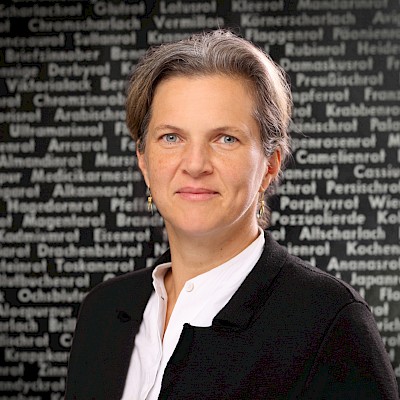Kristin Marek, Dr., is Art Historian and preparing her second book (Habilitation) at Goethe-Universität Frankfurt am Main, Kunstgeschichtliches Institut. Since 2011 she is supported from Margarethe-von-Wrangell-Habilitationsprogramm (Ministery of Sience, Research and Arts Baden-Württemberg, Karlsruhe University of Arts and Design, Department of Art History and Philosophy of Media). 2007-2011 Assistant Professor at Ruhr Universität Bochum, Department of Art History, and at Kunsthochschule Kassel; 2005-2006 Post-Doc-Researcher at Bauhaus-Universität Weimar; Ph.D. in Art History 2005; 2003-2005 Doctoral Researcher at Karlsruhe University of Arts and Design; she received fellowships from the Internationales Forschungszentrum Kulturwissenschaft, Vienna, Akademie Schloß Solitude, Stuttgart and the Zentralinstitut für Kunstgeschichte, Munich.
Her research focuses on Contemporary Art, Early Modern Art, and the Art of the later Middle Ages. Among her areas of special interest are body-image issues, the aesthetics of the corpse and, more broadly, picture theory, politics and critical reflections.
Writing the (after)life of an image: Reflections on a morphomatic iconology of the exposed corpse starting with Hans Holbein the Younger
Hans Holbein the Younger’s »Body of the Dead Christ in the Tomb« (1521-22; Kunstmuseum Basel) is one of the most influential images in the history of European painting. From the sixteenth century to the present, artists—for example recently Marlene Dumas and Paloma Varga Weisz—have repeatedly worked with drastic representations of an exposed corpse. The image is also present in imaginative literature (Dostoyevsky’s »Idiot«). Remarkably, the numerous references we find to the exposed corpse have thus far only been considered in a scattered way, if at all; the project is thus meant as a first comprehensive examination of the »life writing« initiated by Holbein’s powerful image. The aim will be to explore the complex history of the image’s trans-epochal and trans-medial migration.
As a rule, art-historical research has approached motivic relationships in an iconographic framework; this has meant using a descriptive form we can understand as relatively closed, and thus above all examining specific contents and meanings. Forming a contrast to such iconographic treatment, the focus on the migration of images is concerned with movements and transitions—often a-chronological, anachronistic, or transcultural in nature—of specific cultural formations: a process Aby Warburg addresses with his concepts of the »pathos formula« and the »survival« of images.
With this shift of focus, close study of these cultural formations in terms of a broadly oriented »morphomatic iconology,« conceived, in the sense of the annual theme, as an open descriptive form, becomes possible: an inquiry into the specific iconic logic of each specific imagistic development; and with this an analysis, on a semantic level, of the medial, performative, and material conditions allowing transmission and perception, as well as, not least of all, the techniques at work in this process. Against this backdrop, the project will center concretely on two basic topics:
1. on a theoretical-methodological level, on Warburg’s concepts of »pathos formula« and »survival« of images as specific cultural figurations, together with their analytic potential for the morphomatic iconology I am essaying;
and
2. on the level of concrete image analysis, on the concepts’ productivity and applicability for a »life writing« exploring, in a trans-epochal and trans-medial framework, the cultural figuration of the exposed corpse, using the example of the painting by Hans Holbein the younger.
